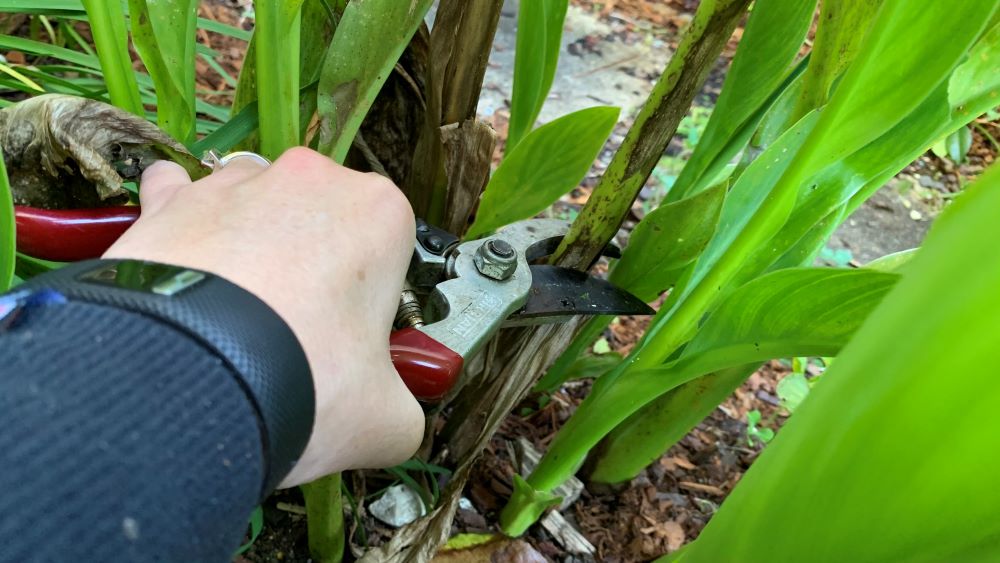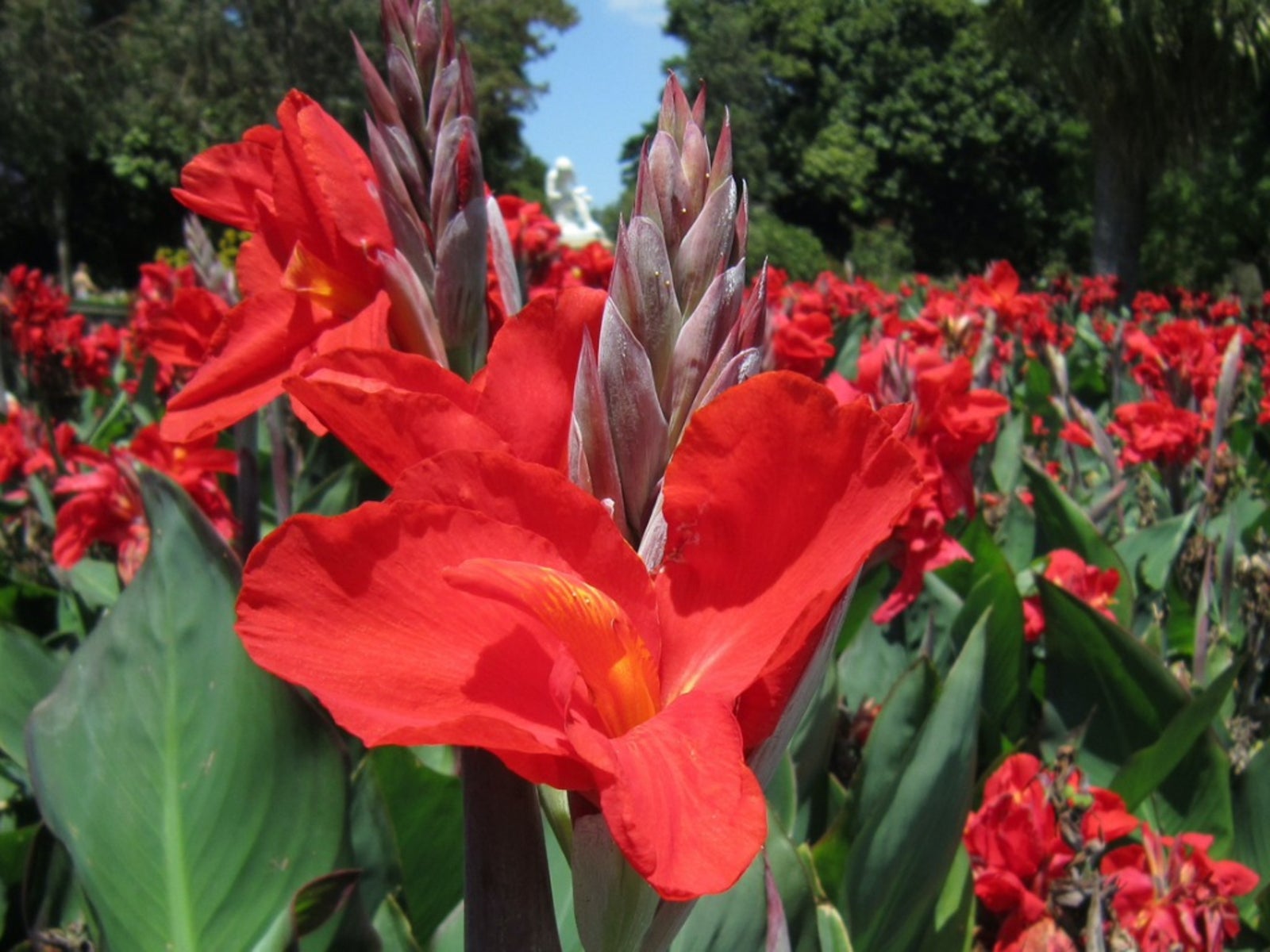Preparing Your Canna Lilies for the Cold Season
As the winter months approach, it’s essential to provide your canna lilies with the necessary care to ensure their survival and healthy regrowth in the spring. Canna lily care for winter involves a series of steps that will protect these beautiful plants from the harsh cold weather. In this article, we will provide a step-by-step guide on how to care for your canna lilies during the winter months, including protecting them from frost and freeze, cutting back and storing rhizomes, and providing proper care for container-grown plants.
Canna lilies are tropical plants that thrive in warm weather, but they can be sensitive to cold temperatures. If not properly cared for, canna lilies can suffer damage or even die during the winter months. By following the tips and recommendations outlined in this article, you can help your canna lilies survive the winter and come back strong and healthy in the spring.
One of the most critical aspects of canna lily care for winter is protecting the plants from frost and freeze. Canna lilies can be damaged or killed by temperatures below 32°F (0°C), so it’s essential to take steps to protect them from cold weather. This can include mulching, covering, or bringing plants indoors. We will discuss these methods in more detail later in this article.
In addition to protecting your canna lilies from frost and freeze, it’s also essential to provide them with proper care during the winter months. This includes reducing watering and fertilization, as well as protecting container-grown plants from extreme temperatures. By following these tips, you can help your canna lilies survive the winter and thrive in the spring.
Throughout this article, we will provide you with the information and guidance you need to care for your canna lilies during the winter months. Whether you’re a seasoned gardener or just starting out, this article will provide you with the knowledge and expertise to keep your canna lilies healthy and thriving all year round.
How to Protect Your Canna Lilies from Frost and Freeze
Frost and freeze can be detrimental to canna lilies, causing damage or even death. To protect your canna lilies from these harsh conditions, it’s essential to take proactive measures. One of the most effective ways to protect canna lilies from frost and freeze is to mulch around the base of the plants. This will help to insulate the soil and prevent the roots from freezing.
Another method of protection is to cover the plants with a breathable cloth or sheet. This will help to trap warmth and prevent cold air from reaching the plants. Bring plants indoors if possible, or move them to a protected area such as a garage or greenhouse. This will provide the most protection from frost and freeze.
Monitoring weather forecasts is also crucial in preparing for potential cold snaps. Keep an eye on the forecast and take action when temperatures are expected to drop below 32°F (0°C). By taking these precautions, you can help to protect your canna lilies from frost and freeze and ensure their survival during the winter months.
In addition to these methods, it’s also important to choose a location for your canna lilies that provides some protection from wind and frost. A location with some shade, such as on the north or east side of a building, can help to reduce the risk of frost damage.
By following these tips and taking proactive measures, you can help to protect your canna lilies from frost and freeze and ensure their survival during the winter months. Proper canna lily care for winter is essential to maintaining the health and beauty of these plants, and with the right precautions, you can enjoy their vibrant blooms for years to come.
Cutting Back and Storing Canna Lily Rhizomes
After the first frost, it’s essential to cut back the foliage of your canna lilies to prepare them for winter storage. This will help to prevent damage to the rhizomes and ensure their survival during the cold winter months. To cut back the foliage, use a pair of clean, sharp pruning shears to cut the stems back to about 6-8 inches from the ground.
Once the foliage has been cut back, it’s time to dig up the rhizomes and store them in a cool, dry place. Carefully dig around the rhizomes, making sure not to damage them, and gently lift them out of the ground. Remove any excess soil from the rhizomes and trim back any dead or damaged roots.
To prevent rot and disease, it’s crucial to properly clean and dry the rhizomes before storing them. Use a soft-bristled brush to gently remove any remaining soil or debris from the rhizomes, and then dry them with a clean towel. This will help to prevent moisture from accumulating on the rhizomes and reduce the risk of rot and disease.
Store the rhizomes in a cool, dry place, such as a basement or garage, where the temperature remains between 40-50°F (4-10°C). Make sure the rhizomes are not exposed to direct sunlight or extreme temperatures, as this can cause damage or rot. Check on the rhizomes periodically to ensure they are not drying out or developing any signs of rot or disease.
By following these steps, you can help to ensure the survival of your canna lilies during the winter months and promote healthy regrowth in the spring. Proper canna lily care for winter is essential to maintaining the health and beauty of these plants, and with the right techniques, you can enjoy their vibrant blooms for years to come.
Winter Care for Canna Lilies in Containers
Canna lilies in containers require special care during the winter months to ensure their survival. One of the most important things to consider is reducing watering and fertilization. Canna lilies in containers typically require less water and nutrients during the winter months, as they are not actively growing.
To reduce watering, simply water the canna lilies when the soil feels dry to the touch. Avoid overwatering, as this can lead to root rot and other problems. You can also reduce fertilization by skipping the regular fertilization schedule during the winter months.
In addition to reducing watering and fertilization, it’s also important to protect the containers from extreme temperatures. Canna lilies in containers can be sensitive to cold temperatures, so it’s essential to bring them indoors or move them to a protected area during the winter months.
When bringing canna lilies in containers indoors, make sure to provide them with sufficient light. Canna lilies typically require bright, indirect light to photosynthesize and grow. You can place them near a sunny window or use grow lights to provide the necessary light.
Another important consideration for canna lilies in containers is repotting. If the container is too small, it may not provide enough room for the canna lily to grow and thrive. Consider repotting the canna lily in the spring when it becomes active again.
By following these tips, you can help ensure the survival of your canna lilies in containers during the winter months. Proper canna lily care for winter is essential to maintaining the health and beauty of these plants, and with the right techniques, you can enjoy their vibrant blooms for years to come.
Common Winter Pests and Diseases to Watch Out For
During the winter months, canna lilies can be susceptible to certain pests and diseases that can cause damage or even death. One of the most common winter pests that can affect canna lilies is the spider mite. These tiny, spider-like insects can cause yellowing or bronzing of the leaves and can be difficult to control.
To prevent spider mites, make sure to inspect your canna lilies regularly for signs of infestation. If you notice any spider mites, treat the plants with insecticidal soap or neem oil. You can also use a systemic insecticide to control spider mites.
Another common winter disease that can affect canna lilies is root rot. This disease is caused by overwatering and can cause the roots to rot, leading to the death of the plant. To prevent root rot, make sure to reduce watering during the winter months and avoid getting water on the crown of the plant.
Other common winter pests and diseases that can affect canna lilies include mealybugs, scale, and leaf spot. To prevent these pests and diseases, make sure to provide your canna lilies with proper care, including reducing watering and fertilization, and protecting the plants from extreme temperatures.
By being aware of these common winter pests and diseases, you can take steps to prevent them and ensure the health and survival of your canna lilies. Proper canna lily care for winter is essential to maintaining the health and beauty of these plants, and with the right techniques, you can enjoy their vibrant blooms for years to come.
Forcing Canna Lilies to Bloom Indoors During Winter
While canna lilies typically bloom during the warmer months, it is possible to force them to bloom indoors during the winter months. This can be a great way to enjoy the beautiful flowers of canna lilies during the cold winter months. To force canna lilies to bloom indoors, you will need to provide them with sufficient light, water, and nutrients.
One of the most important things to consider when forcing canna lilies to bloom indoors is light. Canna lilies need bright, indirect light to photosynthesize and produce flowers. You can provide this light by placing the plants near a sunny window or using grow lights. Make sure to provide at least 12 hours of light per day to promote blooming.
In addition to light, canna lilies also need water and nutrients to bloom. Make sure to water the plants regularly, but avoid overwatering, which can lead to root rot and other problems. You can also fertilize the plants with a balanced fertilizer to provide the necessary nutrients for blooming.
Another important consideration when forcing canna lilies to bloom indoors is temperature. Canna lilies prefer warmer temperatures, typically above 60°F (15°C), to bloom. Make sure to keep the plants in a warm location, such as a sunny room or a greenhouse, to promote blooming.
By providing canna lilies with the right conditions, including light, water, nutrients, and temperature, you can force them to bloom indoors during the winter months. This can be a great way to enjoy the beautiful flowers of canna lilies during the cold winter months and add some color and vibrancy to your home.
Forcing canna lilies to bloom indoors can also be a great way to get a head start on the growing season. By forcing the plants to bloom indoors, you can get a jump start on the growing season and enjoy the beautiful flowers of canna lilies earlier than usual.
Winterizing Canna Lilies in Different USDA Hardiness Zones
Canna lilies are sensitive to cold temperatures and require special care during the winter months, especially in areas with harsh winters. The USDA hardiness zone map is a useful tool to determine the specific winterizing needs of canna lilies in different regions.
In USDA hardiness zones 3-5, canna lilies need to be protected from extreme cold temperatures. Mulching and covering the plants can help to protect them from frost and freeze. Bringing the plants indoors or moving them to a protected area, such as a greenhouse or sunroom, can also provide additional protection.
In USDA hardiness zones 6-7, canna lilies can be left outdoors during the winter months, but they still require some protection. Mulching and covering the plants can help to protect them from frost and freeze. It’s also important to reduce watering and fertilization during the winter months to prevent root rot and other problems.
In USDA hardiness zones 8-10, canna lilies can be left outdoors year-round, but they still require some care during the winter months. Reducing watering and fertilization can help to prevent root rot and other problems. It’s also important to provide some protection from extreme temperatures and frost.
Regardless of the USDA hardiness zone, it’s essential to monitor weather forecasts and prepare for potential cold snaps. Bringing plants indoors or moving them to a protected area can provide additional protection during extreme weather conditions.
By understanding the specific winterizing needs of canna lilies in different USDA hardiness zones, you can provide the best possible care for your plants and ensure their survival and healthy regrowth in the spring.
Spring Care for Canna Lilies After Winter
After a long winter, canna lilies need proper care to ensure their survival and healthy regrowth in the spring. One of the most important steps in spring care for canna lilies is repotting. Canna lilies typically need to be repotted every 2-3 years, and spring is the perfect time to do so. Choose a well-draining potting mix and a container that is slightly larger than the previous one.
Fertilizing is also crucial in the spring. Use a balanced fertilizer that is high in phosphorus to promote healthy root growth and blooming. Apply the fertilizer according to the manufacturer’s instructions, and make sure to water the plants thoroughly after fertilizing.
Pruning is another important step in spring care for canna lilies. Remove any dead or damaged leaves or stems, and cut back the plant to about 6-8 inches from the ground. This will help to promote new growth and prevent the plant from becoming leggy.
Gradually acclimating canna lilies to outdoor conditions in the spring is also important. Start by moving the plants to a shaded area outdoors, and gradually increase the amount of direct sunlight they receive over the course of 7-10 days. This will help to prevent shock and ensure a healthy transition to outdoor conditions.
By following these steps, you can help to ensure the survival and healthy regrowth of your canna lilies in the spring. Proper canna lily care for winter is essential to maintaining the health and beauty of these plants, and with the right techniques, you can enjoy their vibrant blooms for years to come.








